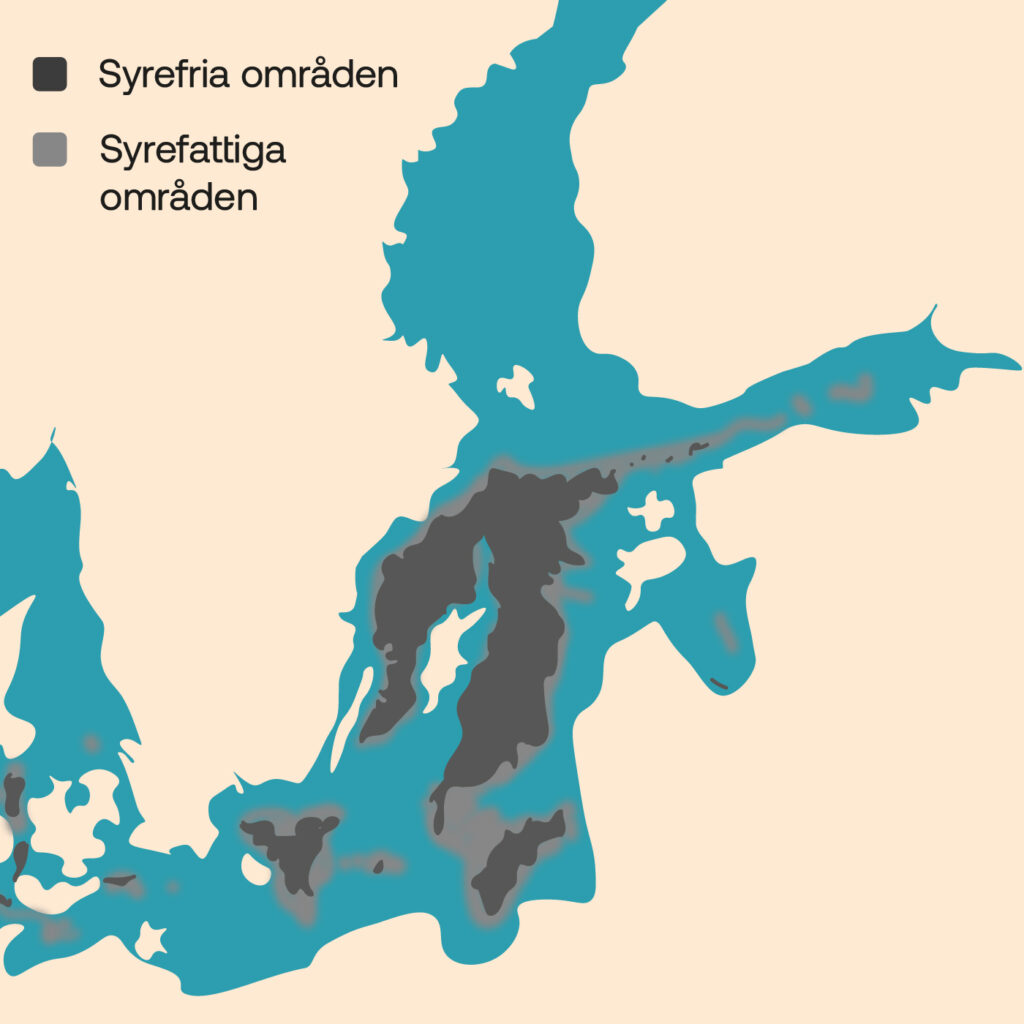It is often said that much of the Baltic Sea is dead. What is referred to is that there are widespread areas, specifically seabeds, that are anoxic or have low oxygen levels. Historically, there have been intermittent anoxic areas in the Baltic Sea during the oceans 8,000 year long existens. This is because the Baltic Sea tends to become anoxic due to its enclosed nature. The inland sea is dependent on inflows of oxygen-rich water from the Atlantic Ocean, but the only connections to the world’s oceans is through the Danish the Danish straits and the North Sea.
Why are oxygen-free areas such a common problem? Well, because the areas have spread as a result of human activities that contribute to the outflow of nutrients into the sea, while the lack of oxygen is getting further and further up the water column. For years, the extent of the Baltic Sea’s anoxic bottoms was estimated to be the size of Denmark, but now the areas have spread to cover an area roughly the size of Ireland and the zone continues to grow.
The consequences of oxygen-free, or low-oxygen, areas are that marine life moves or dies. But the truth is that the seabed is not completely dead. There may be bacteria and fungi – and new studies show that there may be more organisms as well.

Dark gray represents oxygen-free bottoms. Light gray represents oxygen-depleted areas. Source: Oceanografiska enheten, SMHI.
– There are potentially some larger animals, up to one and two millimeters in size, says Elias Broman of Stockholm University, who together with colleagues has found roundworms in the ‘dead bottoms.
– The roundworms can be very resistant to low oxygen conditions. If oxygen levels are extremely low, they can go into metabolic hibernation, but we also found young in the sediment, so there seems to be some form of reproduction, Elias continues.
These worms eat bacteria and stir up particles in the sediment, which can help with oxygenation and the transport of nutrients in the sediment.
The researchers have also discovered zooplankton eggs in the oxygen-free seabed. This is a source of hope. The eggs sink to the bottom and hatch if oxygen conditions improve. And they can stay buried there for years, up to as long as 15 years according to some studies, without dying.
– If the seabeds were to be given better oxygen conditions, it is likely that a large proportion of the eggs would hatch. This is quite an interesting phenomenon. They can act as potential food sources and, together with the roundworms, help the recovery of the bottom life, says Elias.
Why are these areas and bottoms called dead?
– It’s a common term. They mean that the oxygen level is too low for animals to survive.
But there is life. And probably more than we know now.
– There is probably much more to discover, Elias concludes.

Conclusion
When we talk about parts of the Baltic Sea being dead, what we mean is that areas and bottoms of our sea are oxygen-free or have low oxygen levels. This makes it difficult or impossible for higher forms of marine life to survive, but there is life in the sediment, and more life forms will certainly be discovered.
There is hope for improvement in the anoxic and deoxygenated areas if the eutrophication situation in the Baltic Sea could recover, both naturally and mechanically. If the areas become oxygenated again, there is a breeding ground for life with food for fish and other marine animals, among others.
Hope the waters feel a bit clearer now!

